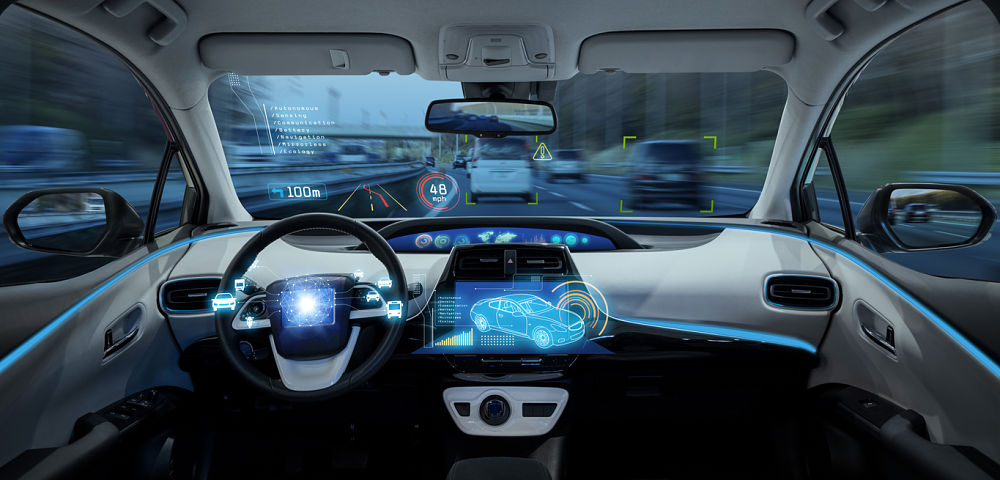Let’s talk about the self-driving automobile revolution from the investor perspective and from the user perspective. First, what’s all the excitement about with the self-driving revolution? It not like autonomous vehicles are new. In fact, we’ve been in the self-driving revolution for decades. In fact, we began using it when the cruise control was introduced in 1948. Actually, we can go back to 1900 in the Wilson-Pilcher, according to Wikipedia.
In 1948, the modern cruise control was invented by Ralph Teetor and appeared first as a feature called auto-pilot on the 1958 Imperial. Adaptive cruise control came next, which uses sensors to determine if you are coming too close to the car in front of you and slows you down.
In 2008, Lexus introduced the first self-parking car? Now, you can get this automatic parking feature on many other cars like Ford, Volvo, Toyota, Chrysler, Chevrolet, BMW, Mercedes Benz and of course Tesla.
So, as you can see, self-driving has been with us ever since. It just seems to burst forward, every now and then, like now.
The Good and Bad of the Self-Driving Automobile
Last week, my car was in the shop for a few days, so they gave me a brand new 2018 Lexus RX 350 SUV as a loaner. It was loaded with so many features including self-driving technology. It was like sitting in the star-ship Enterprise, but I have no clue which button to push to make it go.
Over time I gradually learned this new technology and it is pretty cool. Then, as the days passed, I found quite a few flaws in this new technology. It was like two steps forward and one step back. There were definite pros and cons.
Too bad they aren’t all pros. It would make the decision to upgrade a lot easier. Let me give you a few examples.
Autonomous Cars Have Plenty of Pros and Cons
There is a self-driving feature and lane keeping feature. They call it Lane Keeping Assist and Steering Assist. When these two features are turned on, the car sensors keep an eye on the road for you… sometimes. While you are driving, when you drift to the right or left, the car senses the lines on the side of the road.
The car gives you a vibration in the steering wheel and gently turns you back to the center of your lane. This works quite often, but not all the time.
As I was driving, I took my hands off the wheel to test the technology but kept them right there just in case. The car stayed in the lane… most times. After a few seconds the steering wheel noticed my hands were not there and a warning light came on the dashboard telling me to grab the wheel.
Self-Driving Technology Is Not Road-Ready
That’s a good thing, because while this is a great assist, it does not always work. Self-driving technology is not road-ready. Sometimes the line is faded. Sometimes there are no lines. Other times the technology just does not work for some unknown reason. In those cases, the car drifts over the line so you had better have your hands on the wheel or you will be in trouble.
That must be the problem when people get into accidents thinking they are safe in a self-driving car. We use the term self-driving too freely in advertising and marketing. The technology is really not road ready. Not yet anyway.
Combine this with the Adaptive Cruise Control, and the car can almost drive itself. It drives on the highway at the speed selected, until it senses a car in front of you. Then it slows down. When it drives, it stays in the proper lanes… most times.
The Toyota version of the Lexus cars are easier to use. They have a touch screen and you don’t have to take your attention off the road as long or as often. Lexus uses a remote control on the arm rest. They no longer have a touch screen with many users loved.
The Lexus has plenty of other valuable features like a huge navigation screen with loads of buttons. On one hand the size is very innovative, but on the other hand it’s more complex and takes too much time to use. It takes your eyes off the road way too often for safety.
So, Autonomous Cars Have Been with Us for Decades
So, self-driving has been with us forever. It keeps getting better. Someday it will bring us a safer way to travel. Until that point however, we are in a dangerous place. Don’t depend on these early versions of self-driving technology.
Doing so could be deadly, especially this early in the development of this next level of technology.
As investors, we are excited and actively involved with this next stage with all sorts of players like Google Waymo, Tesla, Uber, all the auto manufactures and supporting tech companies. This is an exciting new area with loads of new investor opportunities. There will be plenty of winners and losers, but the technology will continue to grow.
However, as a driver, remember, today too many people are getting hurt, injured or killed. You don’t want to be part of that score card. All this new technology keeps getting more complicated and more dangerous. It will get better and safer, someday. We just aren’t there yet.
Jeff Kagan is an Equities.com columnist. Kagan is a Wireless Analyst, Telecom Analyst, Industry Analyst, speaker and consultant. He follows wireless, wire line, telecom, Internet, cable TV, IPTV, Cloud, Mobile Pay, FinTech and communications technology. Email him at [email protected]. His web site is www.jeffKAGAN.com. Follow him on Twitter @jeffkagan.




